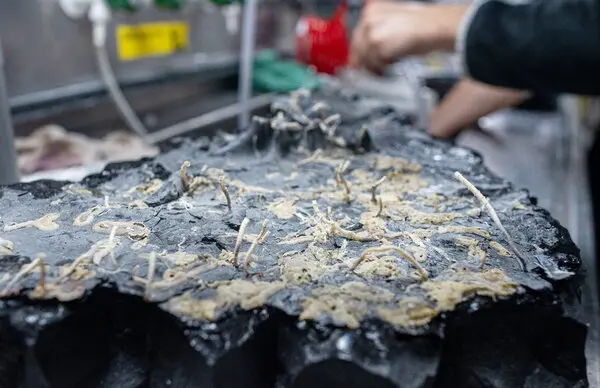By: Kyle Xu
Thousands of feet beneath the ocean, off the shores of Central and South America, a hellish habitat stirs. Shoom! A hydrothermal vent lets loose a terrible stream of boiling water at 700 degrees. Although the surfaces of these vents are known to have a diverse circle of life, scientists are still oblivious to the ones below these hellish geysers, or at least until now.
Everything changed in July when a diving robot penetrated the volcanic rock and saw what was undeniably life: vast areas filled with squiggling noodle-like tubeworms and many other bizarre creatures.
“This is the first time that animal life was found below the surface,” said Monika Bright, an ecologist at the University of Vienna and lead scientist of the study.
Though microbial life was previously known to exist under the surface, the fact that there were visible animals seems shocking. “The deeper you go, the warmer it goes, the less oxygen there is, the more toxic chemicals are in it,” said Dr. Bright. “It’s very shallow, but it’s still below the Earth’s crust.”
The water below the hydrothermal vents was cooked by the magmatic heat, which shoots right back out the vents as streams of blazing liquid. The surface of the vents also boasts a metropolis of tubeworms. Some scientists suggested that the worms might also be under the vents, like Dr. Bright.
Just to be sure, Dr. Bright led her team on Falkor, a ship owned by the Schmidt Ocean Institute. For two days near the end of July, the team sailed to the eruption-prone section of the East Pacific Rise, finally stopping to let loose their vehicle, SuBastian, fitted with drills, scoops, and saws to navigate the frothing vents. SuBastian took a sample of rock and saw what was rumored to be true.
Rock cavities spread all over the place where water flowed at 75 degrees Fahrenheit. Inside these hollows, there were many adult tubeworms to be seen.
This discovery had opened up a whole new door to our understanding of the world, and it meant something different to everyone. For some, people like to think about otherworldly life. But Dr. Bright goes plain and simple. “I’m not thinking of other planets and moons – I’m thinking that there’s so much mystery to be discovered in our Earth,” she said. “I feel like I know this place. I’ve studied this place for 30 years. And still, you can find something unexpected.”’
Source:
https://www.nytimes.com/2023/08/08/science/hydrothermal-vent-animals.html











